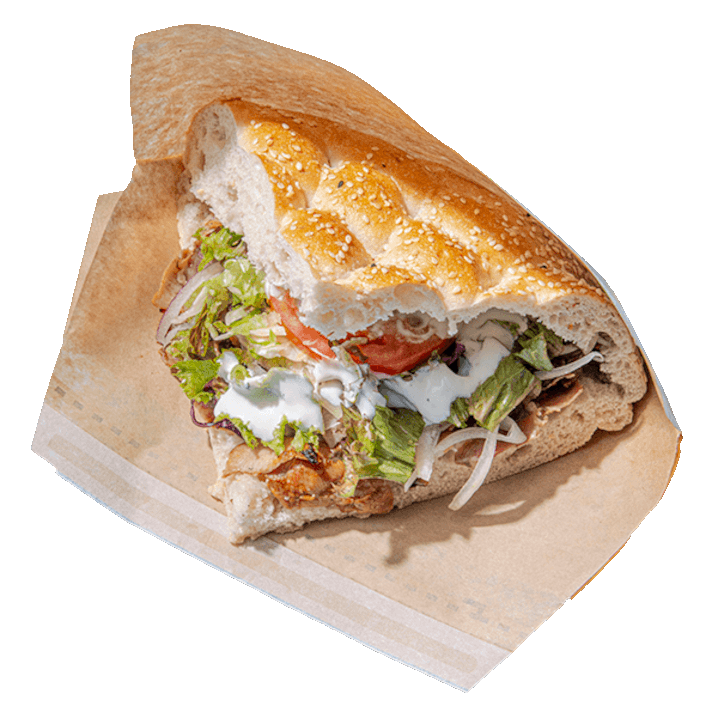11.08.2023 News
Agriculture and forestry Plants Plant breeding research
How powdery mildew outwits the defenses of plants
Plant researchers from Cologne have unraveled the molecular arms race in the evolution of plants and harmful fungi.
11.08.2023 News
Agriculture and forestry Plants Plant breeding research
Plant researchers from Cologne have unraveled the molecular arms race in the evolution of plants and harmful fungi.
15.08.2023 News
Chemistry Plants Agriculture sciences
The fungus Pandora cacopsyllae, which attacks the leaf fleas feared in orchards, could serve as a biological control agent in the future, according to a study.
21.08.2023 News
Chemistry unspecific Chemistry
According to a recent study, microplastic particles are not only blown by the wind, but also enter the atmosphere directly from seawater.
17.08.2023 News
Agriculture and forestry Plants Biotechnology/Systems biology
The cooling evaporation effect is reduced when plants shift their photosynthesis activity to the morning hours during a heat wave. The researchers have now been able to demonstrate this using satellite data.
11.08.2023 Studies and statistics
unspecific unspecific unspecific
Marine air worldwide contains microplastic particles that enter the atmosphere both from land sources and via seawater. A research team led by the Institute of Chemistry and Biology of the Sea (ICBM) at the University of Oldenburg conducted air sampling studies along the Norwegian coast to the Arctic.
25.08.2023 News
Agriculture and forestry Animals Biodiversity
Until 2010, biodiversity in European rivers was still recovering - since then, this development has stagnated. An international study shows that biodiversity is under pressure, especially downstream from urban areas and agricultural land.
23.08.2023 News
Chemistry Microorganisms Biotechnology/Systems biology
Giessen researchers have developed a new system for the tailored control of gene expression in bacteria. Bioplastics production would also benefit from this.
28.08.2023 News
Energy Waste Energy technologies
In the Leuna100 project, the partners involved want to combine technological innovations into a process suitable for industrial use.
01.09.2023 News
unspecific Microorganisms Biotechnology/Systems biology
Using micro-computed tomography, a research team has succeeded in observing the growth of mold cultures in the bioreactor in 3D.
04.09.2023 News
Energy Microorganisms Biotechnology/Systems biology
The fermentation of liquid fractions from residual materials such as liquid manure taps unused biomass potential.
07.09.2023 News
Chemistry Waste Biotechnology/Systems biology
Researchers at the University of Hohenheim develop a bio-based and recyclable plastic for food packaging from agricultural residues.
06.09.2023 News
Agriculture and forestry Plants Agriculture sciences
Bayer AG invests 220 million euros in a new research and development center at the Monheim site.
11.09.2023 News
Agriculture and forestry Plants Biotechnology/Systems biology
A pilot plant for the production of high-performance fibers from beech pulp went into operation at the Technikum Laubholz in Göppingen.
13.09.2023 News
Chemistry Microorganisms Biotechnology/Systems biology
Markus Jeschek, Professor of Synthetic Microbiology at the University of Regensburg, has received the European Research Council's 1.5 million euro ERC Starting Grant for the development of novel biosensors based on proteins and RNA.
19.09.2023 News
Agriculture and forestry Plants Agriculture sciences
Artificial shading could help breed better, higher-yielding varieties.
20.09.2023 News
Food Microorganisms Biotechnology/Systems biology
Heidelberg-based Cultivated B is the first company in the world to submit an application to the European Food Safety Authority (EFSA) for approval of a cell-based sausage product.
26.09.2023 News
Chemistry Microorganisms Biotechnology/Systems biology
With Darwinibacteriales, researchers in the EU Micro4Biogas project have identified a new group of anaerobic bacteria that could be the key to optimized biogas production.
21.09.2023 News
unspecific unspecific unspecific
Just in time for the UN Summit on Agenda 2030 in New York, the German Federal Ministry of Research has published its own sustainability strategy - and the bioeconomy plays an important role in it.

21.09.2023 Product
Consumables Plants
Kebabs to go are usually wrapped in aluminium foil. An award-winning innovative paper packaging offers a more sustainable solution.
27.09.2023 News
Agriculture and forestry Plants Plant breeding research
A European research network aims to optimize ozone tolerance, photosynthetic performance and stem quality in barley.
06.10.2023 News
Agriculture and forestry Plants Agriculture sciences
Temperatures in the ground are rising faster than in the air. This is the conclusion of a study in which researchers also call for a reassessment of the effects of heat extremes in the ground.
04.10.2023 News
unspecific Microorganisms Biotechnology/Systems biology
The enzyme PET46, which originates from archaea, decomposes medium- and long-chain plastic molecules, as a research team from Germany has discovered.
02.10.2023 Success story
Chemistry Microorganisms Biotechnology/Systems biology
The Linopol project has developed a process to produce polymer intermediates from biological sources.
10.10.2023 News
Chemistry Plants Chemistry
As part of an EU project, Fraunhofer ISC is working on a bio-based alternative to so-called 'Forever Chemicals' for packaging and textiles.
09.10.2023 News
Chemistry Microorganisms Biotechnology/Systems biology
A Max Planck team from Bremen has studied a methane microbe living in oil fields that can elegantly convert CO2 into formic acid.
11.10.2023 News
Energy Microorganisms Biotechnology/Systems biology
For a long time, the living environment in the fermenters of biogas plants was a black box. An EU consortium with the participation of researchers from Cottbus has used metagenome analysis to track down the most important microbial biogas producers.
23.10.2023 News
Machine and plant engineering Waste Materials sciences
Together with partners, Fraunhofer researchers want to develop material-saving processes for the production of durable components made of fibre-reinforced biopolymers and thus reduce the CO2 content in vehicle components by up to 50%.
28.06.2021 News
unspecific unspecific unspecific
With a functional fiber made from green waste, the young company nakt convinced the jury at the Bavarian PlanB competition for bio-based business ideas.

17.08.2021 Interview
Agriculture and forestry unspecific Bioökonomie mitgestalten
As co-chair of the German government's new Bioeconomy Council, Iris Lewandowski wants to stimulate public debate on the topic of biobased management. The agricultural scientist from the University of Hohenheim is an advocate of modern as well as ecologically compatible agriculture.
07.07.2021 News
Pharmaceutical industry Waste Materials sciences
A Fraunhofer IMWS research team has been awarded the Halle IQ Innovation Prize for the development of a wound dressing made of natural elastin.
12.07.2021 News
Chemistry Plants Chemistry
BASF has developed a new biopolymer from the konjac plant tuber to replace synthetic ingredients in cosmetic products.
19.07.2021 News
Agriculture and forestry Plants Agriculture sciences
Bosch and BASF develop Smart Spraying solution to automatically detect and control weeds.
22.07.2021 News
Construction Plants Materials sciences
Inspired by nature and built with natural fibers: the pavilion in the Botanical Garden of the University of Freiburg shows what sustainable building can look like.
01.07.2021 Studies and statistics
unspecific unspecific unspecific
In order not to push the earth beyond its carrying capacity, global CO2 emissions and resource consumption must be significantly reduced. A study by the International Institute for Sustainability Analysis and Strategies (IINAS) commissioned by the Naturschutzbund Deutschland e.V. (NABU) shows where the potential for sustainable use of raw materials is greatest.
29.07.2021 News
Chemistry Plants Chemistry
In the EU project BIOMAT, researchers from eight EU countries, including Germany, are working on sustainable foam and composite materials, more than half of which are made from renewable raw materials.
02.08.2021 News
Pharmaceutical industry Fungi Biodiversity
The genes carried by the fungi of a lichen differ depending on whether they are found at the base and summit of mountains. This is relevant for drug research.

30.08.2021 Interview
Agriculture and forestry Microorganisms Biodiversity
Jena geoecologist Söhnke Zaehle is researching how nutrients such as nitrogen affect the material cycles of ecosystems.
04.08.2021 News
Chemistry Waste Chemistry
Researchers at the German Institute of Textile and Fiber Research Denkendorf, together with industrial partners, have processed plant fermentation residues from biogas plants into a composite material, which they used to make a piece of furniture.
29.07.2021 Studies and statistics
unspecific unspecific unspecific
Earth Overshoot Day marks the date when humanity’s demand for ecological resources and services in a given year exceeds what Earth can regenerate in that year. In 2021, Earth Overshoot Day lands on July 29. This is according to calculations by the Global Footprint Network.
04.08.2021 Success story
Agriculture and forestry Plants Agriculture sciences
In the joint project IMPAC3, partners from research and industry have explored which genotypes are suitable for mixed cultivation in fields, grassland and forests.